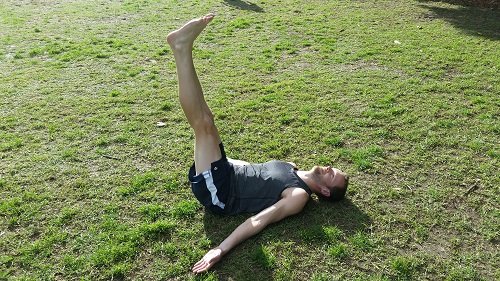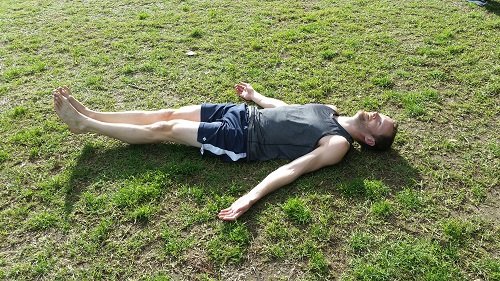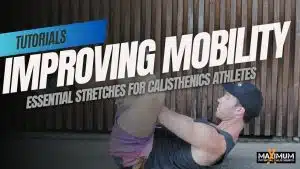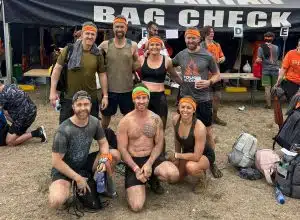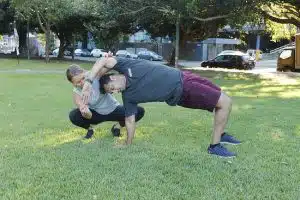In the incline push-ups and inverted rows tutorials of this series, I listed the rectus abdominis as a stablising muscle.
This is because your abdominal muscles are made for stabilising the spine and as a result, almost every calisthenics exercise will work your core muscles.
However, to get a truly strong core then you need to add some exercises that really force you to stabilise a lot of resistance through your spine.
Enter leg raises.
[embedyt] https://www.youtube.com/watch?v=p64DwBhf-54[/embedyt]
Why Not Crunches?
I’ve written about this a little more extensively in the past but it’s fair to say that I’m not a big fan of crunches.
They isolate the rectus abdominis, which is not the most natural way to strengthen your abdominals.
Furthermore, your are only lifting the weight of your upper back and head, which is not much weight.
To make this harder you could do it on an incline, but eventually you’re going to run out of equipment free ways to make it more difficult.
To get around this, you have to add more reps. However, all this does is build muscular endurance and very little strength.
Form
Here are a few pointers to look out for when performing your lying leg raises:
Don’t Arch Your Back
Keep the whole of your back on the floor throughout the exercise, any arching will put extra pressure on the back.
If you can’t do this then regress the exercise and only do the range of motion where you can keep your back straight.
Short bridges will also help fix this.
Arm Position
Position your arms wherever they feel comfortable.
Keep Your Feet Off The Ground
At the bottom position, your feet should still be a few centimetres off the ground.
Breathing
Before beginning the exercise, take a deep breath in, exhale as you raise your legs; on the way back down inhale again.
Try to breathe with your stomach rather than your chest as this will engage your diaphragm, intercostals and abdominal muscles to get more strength from your core.
Cadence
This really is an exercise I recommend to go slowly, try a cadence of 2-1-2-1, that is 2 seconds to raise your legs, 1-second hold at the top, 2 seconds back down and finally another second hold at the bottom.
Muscles Worked
To flex your hips we use the iliopsoas, which is the biggest muscle of the hip flexors.
If you perform them nice and slow as detailed, you will get a big burning in your abdominals.
This is because the rectus abdominis is working to keep the back from arching.
Primary
Iliopsoas
Secondary (Synergist)
Tensor Fasciae Latae
Sartorius
Pectineus
Rectus Femoris
Adductor Longus
Adductor Brevis
Stabilisers (Fixators)
Rectus Abdominis
Obliques
Quadriceps
Progression / Regression
To make the exercise easier or harder, you’re simply going to adjust the weight being moved with your legs. Does that mean using ankle weights or some other form of weight, I’ve been doing these for nearly 3 years now and I’ve yet to stop finding a progression that will make me have to use weights.
Bend Your Legs
With bent legs, the weight going through your legs is reduced, start with tucked knees, before straightening once you meet the progression criteria.
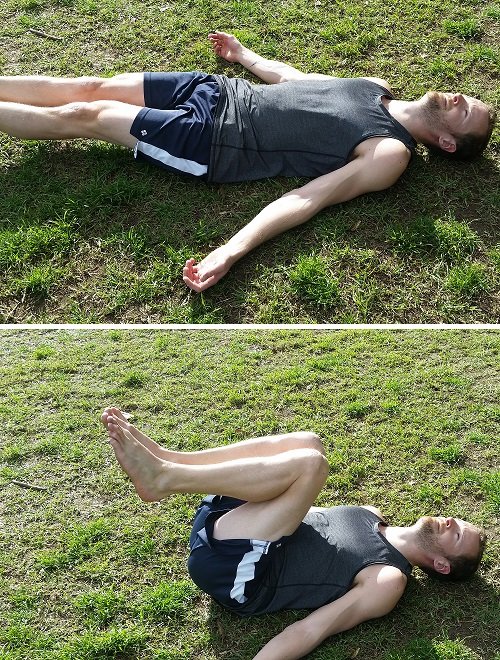
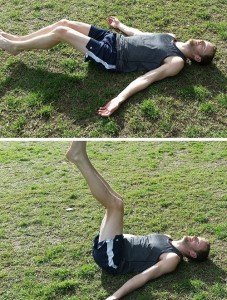
One Leg at a Time
By performing one leg at a time, you are reducing the weight by half; don’t forget to work both sides.

